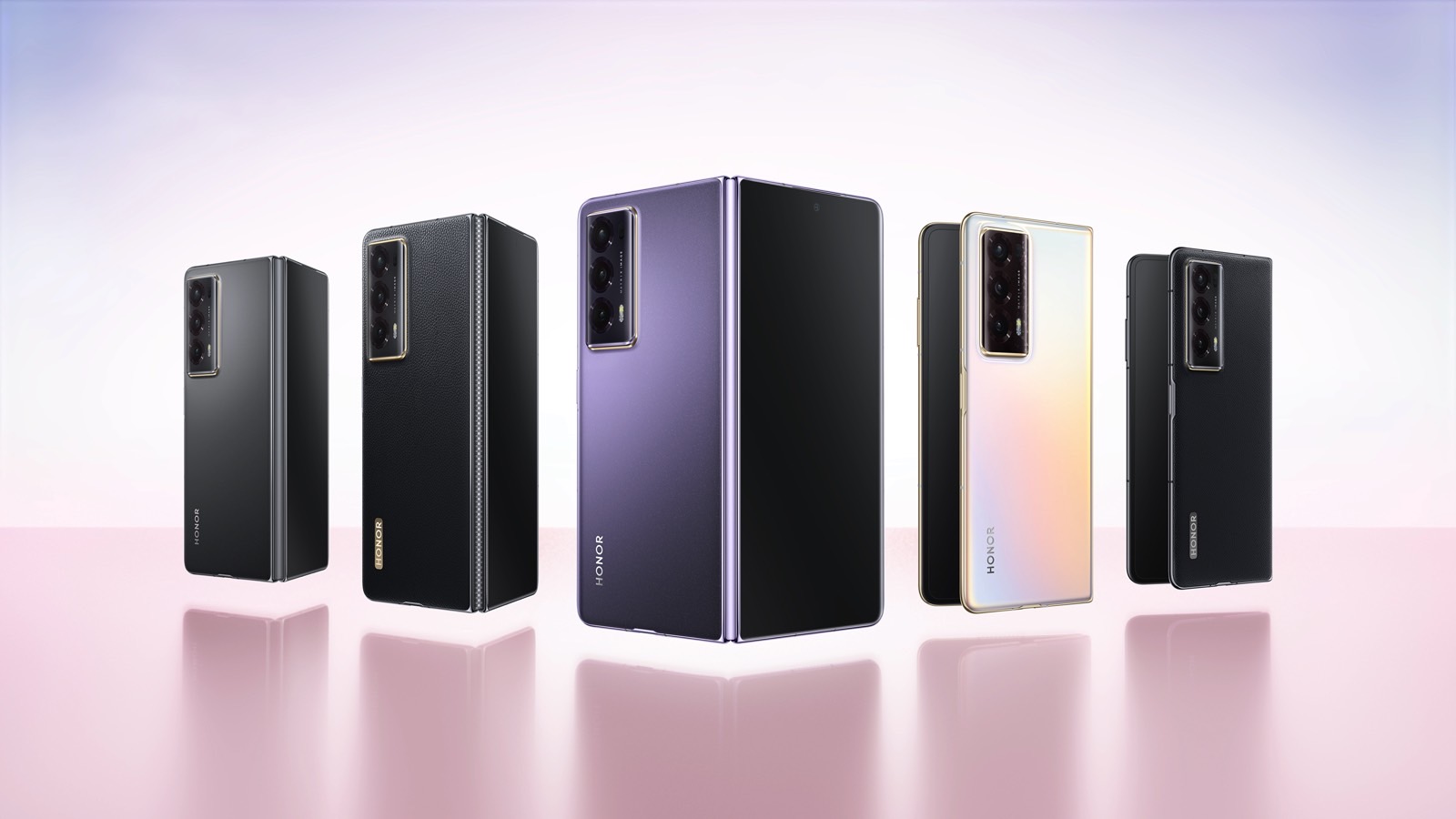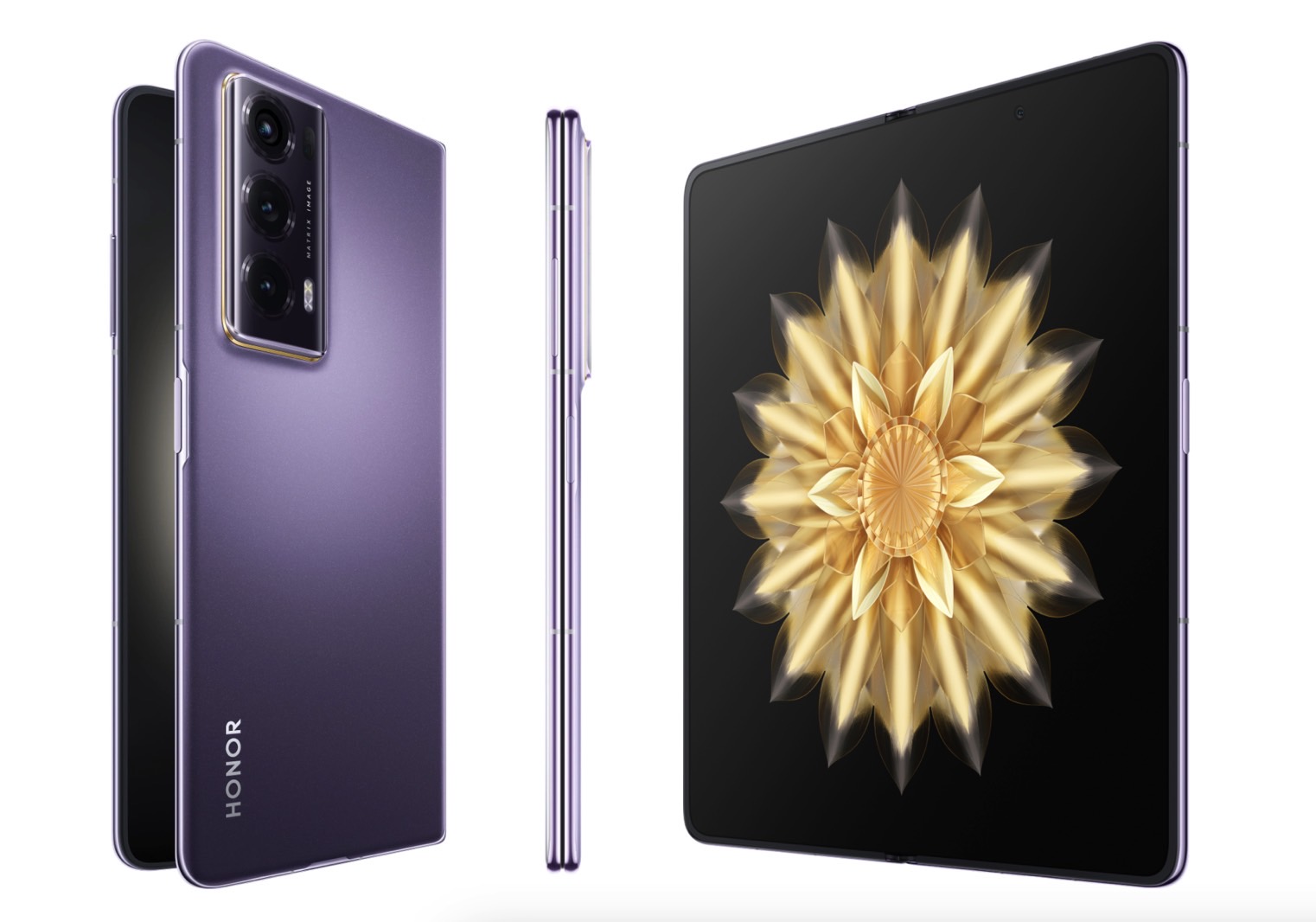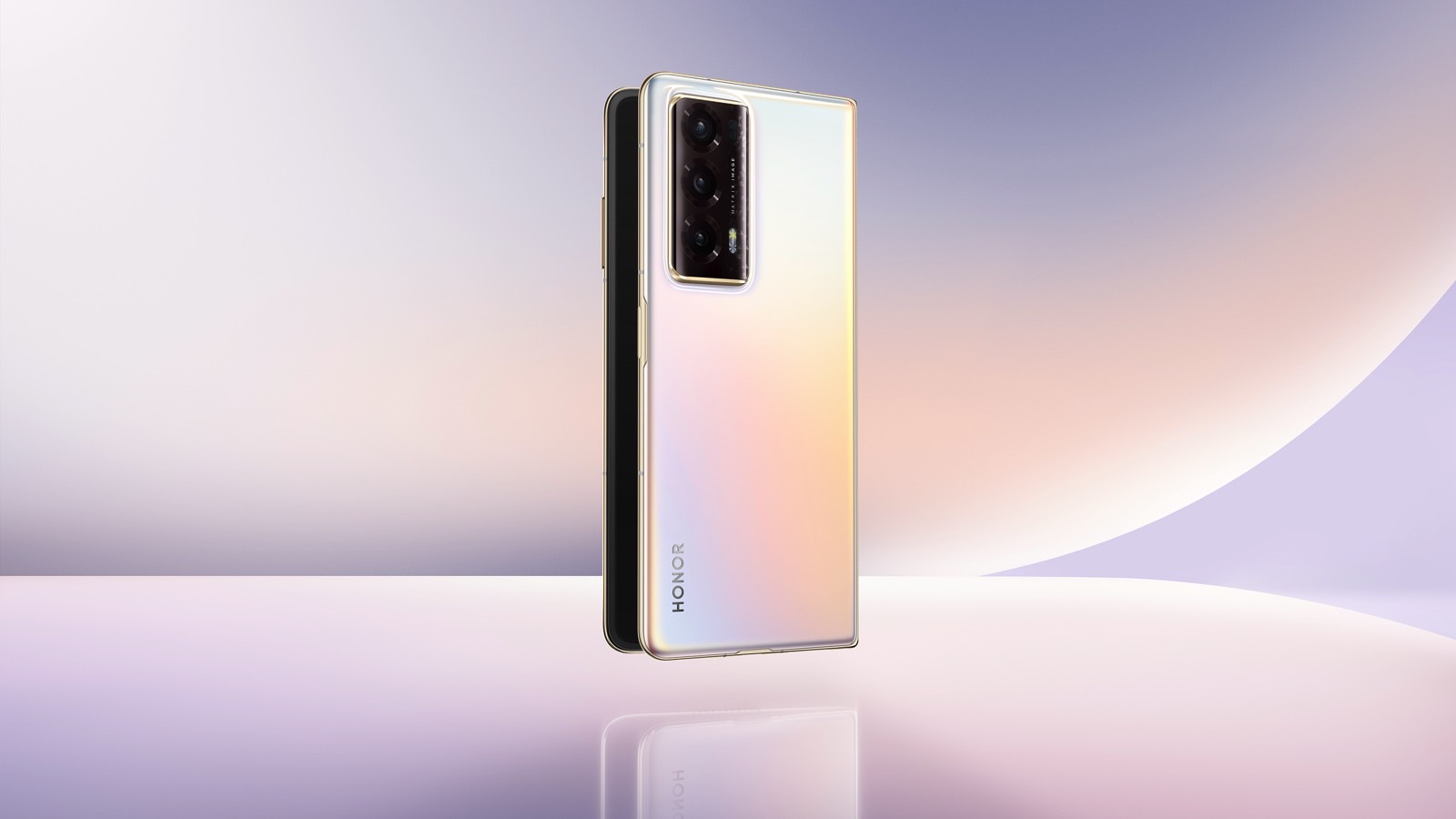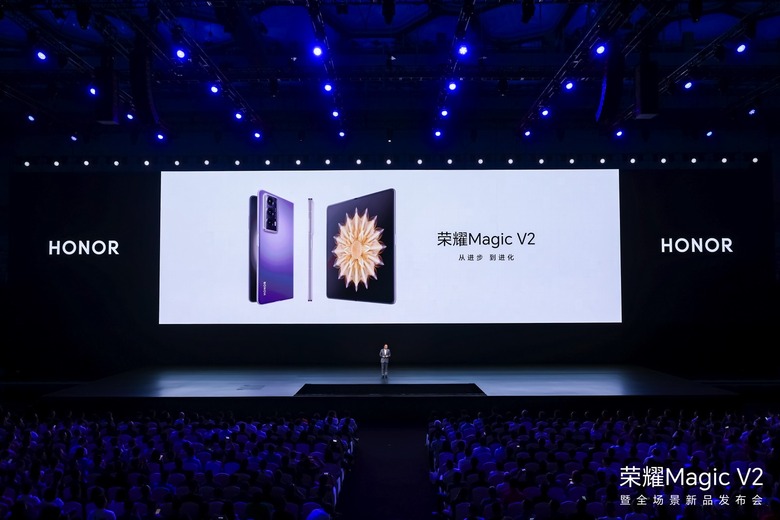Honor's New Foldable Phone Is As Thin As An iPhone 14 Pro, And It Sounds Too Good To Be True
Google just launched the Pixel Fold, and we're a couple of weeks away from Samsung's Galaxy Z Fold 5 and Flip 5 launch event. But these aren't the only new foldables in town that you should be aware of. Chinese smartphone vendor Honor has just unveiled the Honor Magic V2 in China, a device that's about as thick as the iPhone 14.
That's an incredible feat for this particular form factor. Honor might be the first to significantly shrink down the size of a foldable handset that becomes a tiny tablet when unfolded. That's right, the Magic V2 is a direct competitor to the Pixel Fold and the upcoming Galaxy Z Fold 5.
The Chinese vendor says it managed to pull off this design breakthrough with the help of several innovations. All while keeping the price down. It sounds too good to be true. But if Honor's handset holds up in real-life durability tests, it might put tremendous pressure on Samsung and everyone else in the business.
The Honor Magic V2 is a flagship Android phone, rocking a 120Hz OLED panel, the Snapdragon 8 Gen 2 CPU, 16GB of RAM, up to 1TB of storage, and a triple-lens camera module. I'm mentioning these specs out of the gate to clarify that we're looking at the best Android flagship Honor can make.
This isn't an experiment phone where the hardware takes a back seat to the design breakthroughs that would need testing in the wild.

But it's the design details that are the more interesting here. The Honor Magic V2 weighs just 231g, which is incredible. More interesting is the thickness, with the handset having a 9.9mm profile when folded.
The iPhone 14 Pro models are 7.85mm thick. And they don't fold. The Pros also weigh between 206g and 240g. Therefore, the Magic V2 is even lighter than the iPhone 14 Pro Max, something I wouldn't have expected from a foldable.
Comparing the Magic V2 against traditional smartphones might not be fair, however. The Pixel Fold weighs 283g and measures 12.1mm when folded. The Galaxy Z Fold 4 is thicker at 14.2mm thanks to that hinge-with-a-gap, but it's lighter than the Pixel Fold at 263g. The Fold 5 should be even thinner and lighter than its predecessor.

How did Honor pull off this design engineering? The company details two key innovations that helped it reduce the bulk of the foldable. First, the handset features "a first-of-its-kind Super-light Titanium Hinge, which provides the perfect balance between weight and strength."
Honor says it's using a new SGS-certified proprietary steel alloy for the new hinge. As a result, you should be able to fold the handset more than 400,000 times. This gives it a theoretical lifespan of up to 10 years or around 100 folds per day.
The second important breakthrough that makes a slim foldable phone design possible concerns the battery. The Honor Magic V2 features the "thinnest dual silicon-carbon batteries," featuring an average thickness of 2.72 mm.
"The innovative battery features Honor's revolutionary low-voltage charge energy-gathering technology for greater power output at the same voltage compared to graphite-based battery systems," Honor said in its announcement.
The Magic V2 packs a total of 5,000 mAh battery capacity, supporting 66W SuperCharge fast charging.

If the Honor Magic V2 has a thin profile when folded, it's even thinner when unfolded. That's where I'd worry about durability issues the most. Since Honor doesn't mention the type of screen it uses, it can't be ultra-thin glass. And The Verge says the screen feels plasticky. Then again, even foldable with ultra thin glass on top of the OLED panel have a plastic layer on top.
Also important is the rest of the metal chassis. As we just saw with the Pixel Fold, a strong hinge isn't enough if the rest of the metal is prone to bending.
Add the starting price of the handset, 8,999 yuan ($1,254) in China, and you've got another reason to worry about durability. Foldable phones have traditionally been more affordable in China, that's true. But the kind of innovations that make the Magic V2 design possible should be costly. And you'd expect a higher price tag from the handset.
It'll be interesting to see if the Magic V2 will be available outside of China, like its predecessor. One thing is clear, though. Once the handset is available in the wild, we'll get more details about its durability. If it can withstand real-life use without damage, we might be looking at the next big design upgrade for foldable handsets. And if so, it shouldn't be long until some rivals start replicating Honor's design ideas.
